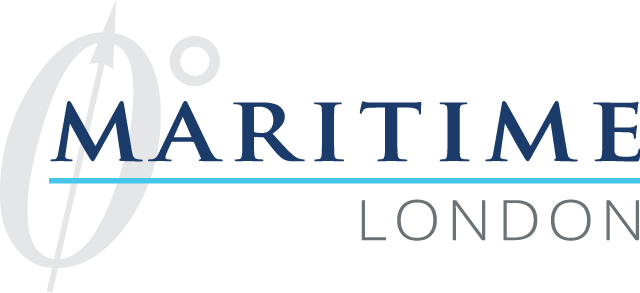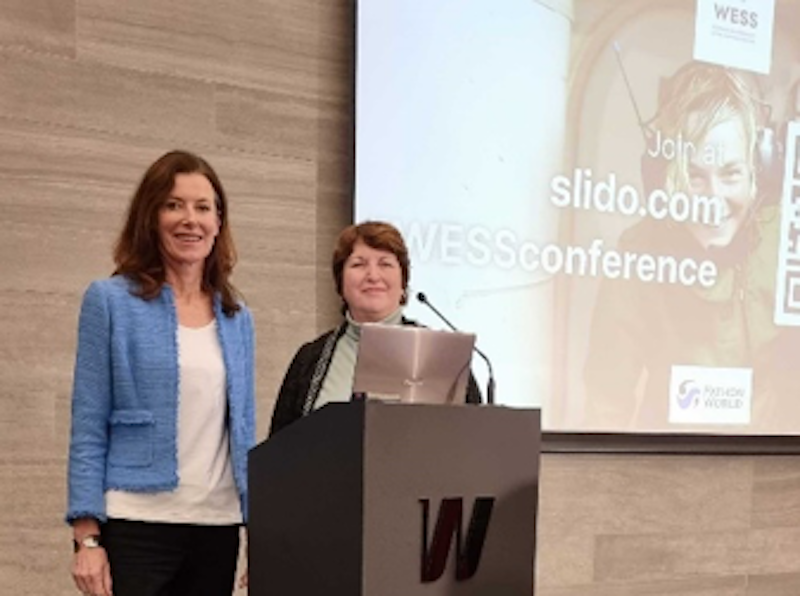Posted on: 21 December 2022
The shipping sector is working on attracting women and younger talent while trying to combat the stigma associated with a working industry often referred to as “outdated” and “old-fashion”.
A project commissioned by the European Community Shipowners’ Associations (ECSA) and the European Transport Workers’ Federation (ETF) addresses the issue of women being underrepresented in the sector. It reflects the necessity to adopt a creative approach to attract and include more women in the maritime industry, particularly in Europe.
The report, part of the joint WESS project (2020-2022) and funded by the European Union, is centred on Pillar 2, named “Enhanced participation of women in European shipping – The opportunity to increase gender balance in the EU maritime sector” and co-authored by Dr Kate Pike, Field Research Ltd., and Sue Terpilowski OBE, FCILT, Image Line Communications Ltd..
The research was conducted throughout the COVID-19 pandemic, influencing the practice through the availability of research participants and the responses to the questions raised.
It consisted of literature reviews, industry surveys, expert interviews, an audit of European countries and three roundtable discussions. The findings that formed the basis of this robust and substantial research are all detailed in the full report.
COVID-19 has notably increased the impact of issues experienced at sea, such as uncertain crew changes, closed borders to seafarers and heightened job insecurities. It has also “significantly changed the outlook for women’s employment status in the global job market, reducing their opportunities and work/life balance.” as mentioned in the report.
Influencing companies’ diversity and inclusion behaviours
A clear message was repeated throughout the focus groups and the research. The maritime sector needs to show its commitment to being diverse and inclusive. Whilst there are many ways this can be done ashore, it can be more challenging to get these messages across onboard.
It is vital that companies take diversity seriously and that they will quickly act if inappropriate behaviours are highlighted in the research if they wish to attract and retain women seafarers. Some of the issues raised from the research that need addressing are bullying, harassment and anti-social behaviours toward female seafarers. As part of this work, Image Line produced a set of free-to-download and personalised Diversity and Inclusion posters to be displayed onboard vessels and a booklet authored by Captain Ayşe Aslı Başak. These are available from https://eumaritimewomen.org/, allowing companies to easily display this commitment on board and ashore.
Recommendations for immediate implementation
Centralisation of information – Encourage companies to implement best-sharing practices without waiting for legalisation to force them into action. The EU Maritime/WESS websites can be expanded to become these central points. They will contain best practices, sample policies, guidelines and links to other useful information, such as gender-neutral vacancy adverts guidance etc.
Setting Targets – The International Chamber of Shipping Diversity Index (published November 2020) has issued a set of objectives to significantly increase the number of women on board from 7.5% to 12% in the next three years and 25% in 20 years. This report recommends that everyone work to achieve these goals instead of trying to set others up and reduce the impact of these agreed goals.
Increase the percentage of women in the industry, including in management positions. The recommendation is to agree to set a target of at least 40% of women in maritime management positions within 20 years. Once the baseline data is gathered, percentages should be set for interval years starting from 2026.
Suitable PPE that meets the needs of all employees – Include in companies’ health and safety policy requirements for the provision of ergonomically suitable PPE that meets the needs of all employees. All vessels should stock feminine hygiene products and easily have proper procedures for their disposal.
Social dialogue and collective bargaining are crucial in promoting the role of women in the maritime industry, supporting life-long learning, work-life balance and tackling the gender pay gap, for instance. Strengthening social dialogue at all levels is essential in promoting gender diversity and equality, fighting gender stereotypes and gender discrimination
In addition, companies policies must include the following:
- Anti-harassment and bullying
- Flexible working
- Corporate diversity and inclusion policies
- Ensure suitable onboard accommodation and requirements for women seafarers
Companies’ best practices should include: Guidelines for stopping the usage of overly masculine language, which is widely used and associated with the maritime sector; a Code of Behaviour; Corporate diversity and inclusion; Flexible working patterns; Ensuring suitable onboard accommodation and requirements for women seafarers; Family friendly policies and practices; Maternal and Paternal policies; Childcare policy; Loss and miscarriage; Care for a family member; Breastfeeding; Remote working; Lone woman general best practice; Include in Health and safety policy requirements the provision of ergonomically-suitable PPE that meets the needs of all seafarers; Menstrual health and hygiene support.
Recommendations for policy changes
- STCW Basic Training to have a greater emphasis on diversity, culture and gender training.
- HELM, increase and enhance the diversity, culture and gender training to be a substantial part of the training with action plans and accountability. The DPA should undertake HELM training as well.
- Complaint’s procedures and role of the DPA – the DPA should be legally accountable for taking the appropriate actions in formal complaints of sexual harassment, bullying and discrimination
Dr Kate Pike Field Research Ltd. declared: “The WESS, EU Maritime Women Project has demonstrated that there is still significant work to be conducted across the industry to attract more women into its various sectors. However, increasing women’s participation must be done responsibly and the recommendations and marketing tools in our report offer sound advice on how to achieve this.
It is the right time to put words into action where gender diversity in maritime is concerned. The immediate and long-term recommendations made in our report show how these first steps and longer-term solutions can be achieved. The industry needs greater gender diversity to help it modernise and prepare for the future and must act collectively and sensitively to make this happen.”
Sue Terpilowski OBE, FCILT, Image Line Communications Ltd. stated: “The timing of the results from this work couldn’t have been better. The maritime sector needs to fight to attract and retain women in its workforce both on land and at sea. Monthly we hear of shortages of people to fill many roles within the sector. Ignoring 50% of the potential workforce by excluding women from the recruitment process because of unconscious bias and not reevaluating the requirements for roles in today’s world, or just it has always been this way, will not solve the rebalancing needed or fill the vacancies.
We have been proactive in creating a suite of marketing materials to help attract more women, from online quizzes and animations to career guidance booklets. We have also looked at showing the industry wants to retain and show it is inclusive by launching, as part of this campaign, an Anti Bullying and Harassment poster (with and without illustrations) for display onboard ships and an Anti Bullying Guide to accompany them. All our materials are free to download from two websites and we are hoping many more trade organisations and institutions will add them to their own websites to increase our reach. By working together and helping to promote all the excellent work being done, we will see real improvement.”
Download the report’s summary: https://eumaritimewomen.org/wp-content/uploads/2022/11/EUMW-Executive-Sumary_NOV-2022.pdf
Download the full report: https://eumaritimewomen.org/wp-content/uploads/2022/11/Enhanced-participation-of-women-in-European-shipping-NOV-2022-web-version.pdf




